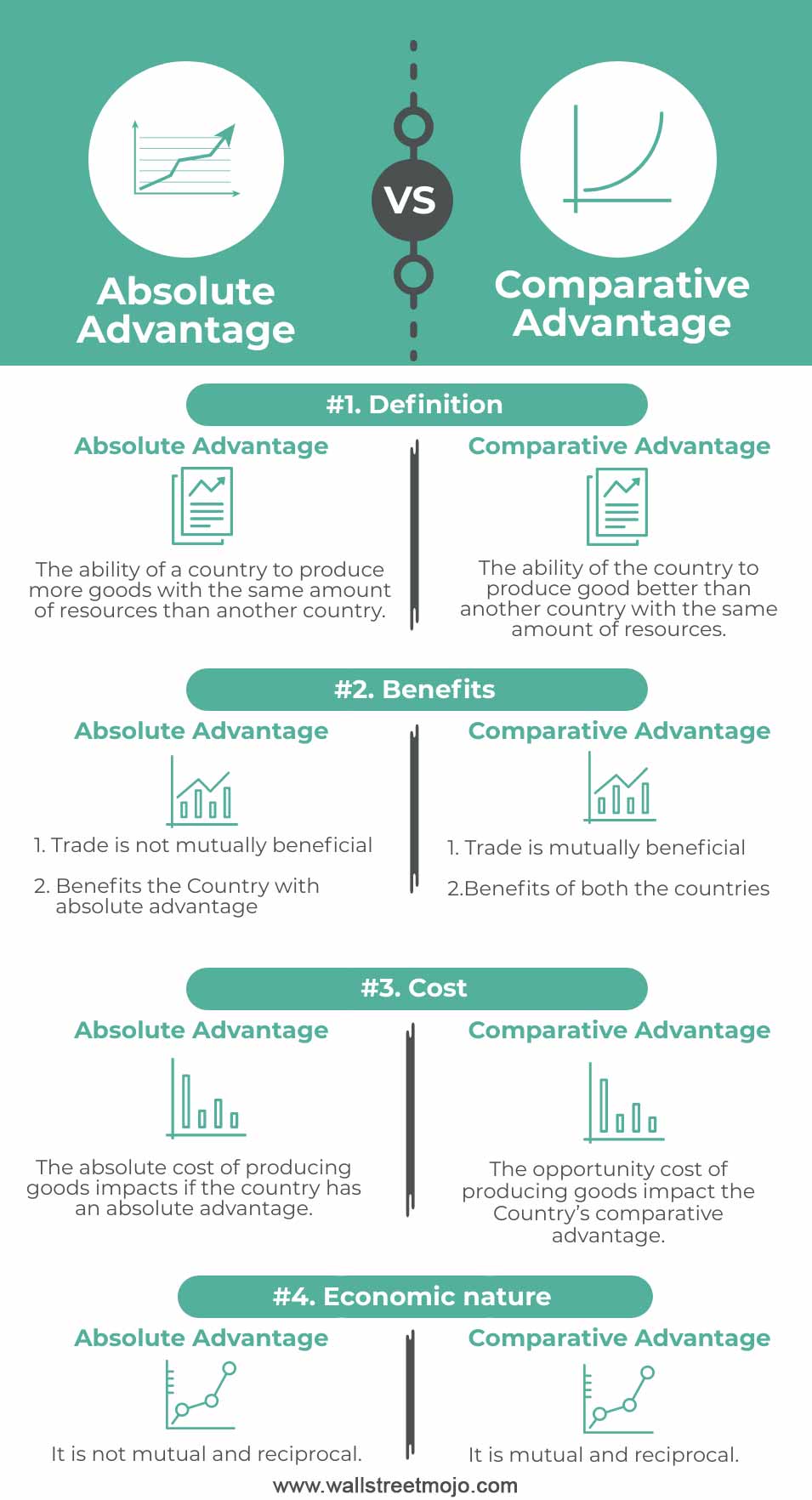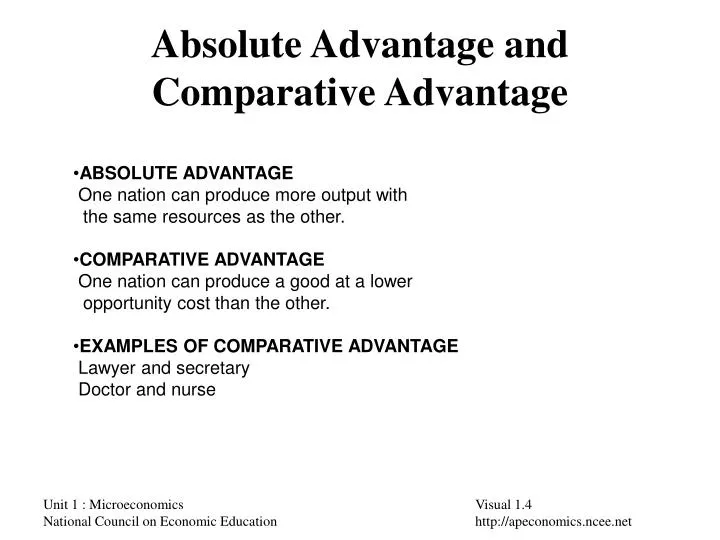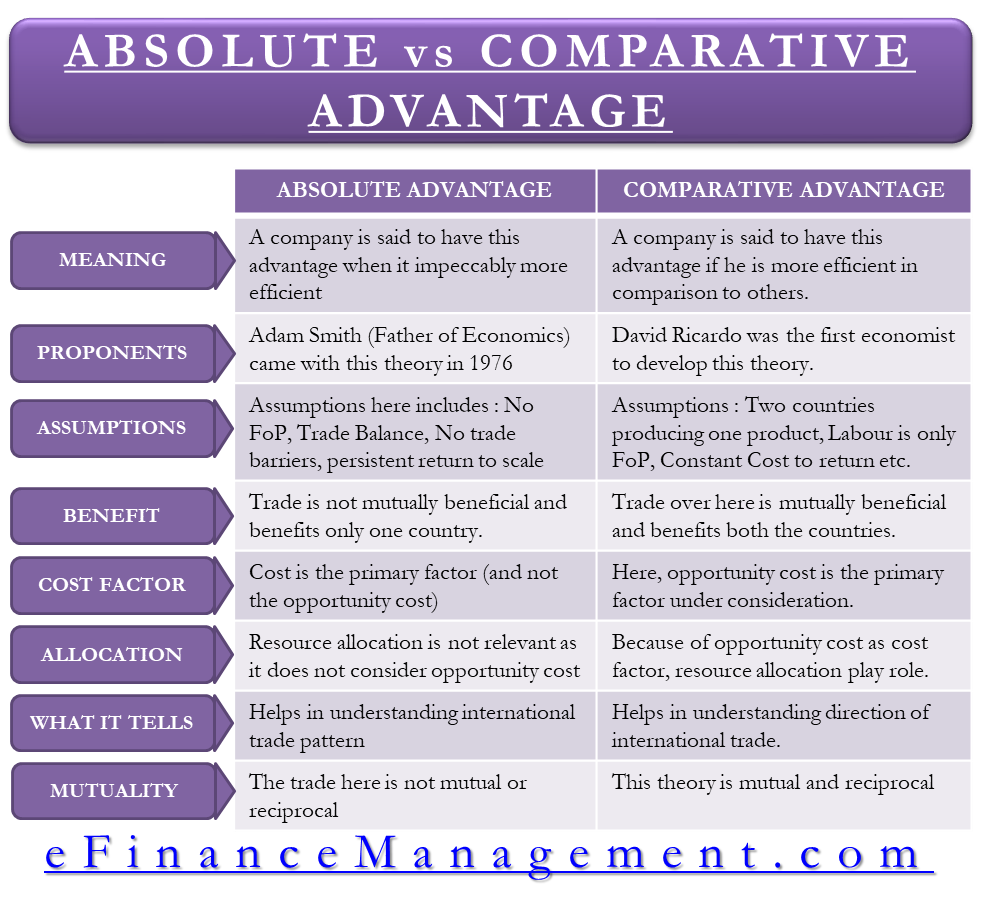In the realm of economics, understanding the differences between absolute advantage vs comparative advantage is crucial for anyone interested in international trade, economic policy, or business strategy. These two concepts, introduced by Adam Smith and David Ricardo, respectively, form the foundation of modern trade theory. Absolute advantage refers to a country's or individual's ability to produce more of a good or service with the same amount of resources compared to another. On the other hand, comparative advantage highlights the ability to produce goods or services at a lower opportunity cost, even if it is not the best at producing everything.
Both theories explain why countries engage in trade and how specialization can lead to increased global wealth. By leveraging these principles, nations can allocate resources efficiently, maximize production, and achieve economic growth. In this article, we will delve into the nuances of both concepts, providing real-world examples and expert insights.
This guide aims to equip readers with a comprehensive understanding of absolute and comparative advantages, enabling them to analyze trade patterns and make informed decisions. Whether you're a student, business professional, or policy maker, mastering these concepts will enhance your grasp of global economics.
Read also:Caroline Flack And Harry Styles The Untold Story Of Their Relationship
Table of Contents
- Introduction to Absolute and Comparative Advantage
- Understanding Absolute Advantage
- Exploring Comparative Advantage
- Key Differences Between Absolute and Comparative Advantage
- Real-World Examples of Absolute and Comparative Advantage
- The Role of Opportunity Cost in Comparative Advantage
- Economic Implications of Absolute and Comparative Advantage
- Criticisms and Limitations
- Modern Applications in Global Trade
- Conclusion and Call to Action
Introduction to Absolute and Comparative Advantage
The theories of absolute and comparative advantage were developed to explain why nations engage in trade and how they benefit from it. Adam Smith's concept of absolute advantage laid the groundwork for understanding productivity differences between countries. Later, David Ricardo expanded on this idea by introducing comparative advantage, emphasizing the importance of opportunity cost in trade decisions.
Both theories are integral to international trade, as they provide a framework for analyzing how countries can specialize in producing goods and services they are best suited for. This specialization leads to increased efficiency, lower costs, and greater economic prosperity for all parties involved.
Understanding Absolute Advantage
Definition and Explanation
Absolute advantage refers to the ability of a country, individual, or business to produce a good or service more efficiently than another. This efficiency can stem from various factors, including access to better technology, skilled labor, or abundant natural resources.
For example, if Country A can produce 100 units of wheat using the same resources that Country B uses to produce only 50 units, Country A has an absolute advantage in wheat production. This concept applies not only to nations but also to individuals and businesses, highlighting the importance of productivity in achieving competitive success.
Key Factors Influencing Absolute Advantage
- Access to advanced technology
- Availability of skilled labor
- Abundance of natural resources
- Economies of scale
Exploring Comparative Advantage
Definition and Explanation
Comparative advantage, introduced by David Ricardo, focuses on the ability of a country to produce goods or services at a lower opportunity cost than another. Opportunity cost refers to the value of the next best alternative that must be forgone to pursue a particular activity.
Even if a country lacks an absolute advantage in producing all goods, it can still benefit from trade by specializing in the production of goods where it has the lowest opportunity cost. This principle demonstrates how trade can be mutually beneficial for all parties involved, regardless of their productivity levels.
Read also:Ace Dubrow The Ultimate Guide To Her Career Achievements And Personal Life
Real-World Application
A classic example of comparative advantage involves two countries: Portugal and England. Portugal is more efficient in producing both wine and cloth compared to England. However, England has a lower opportunity cost in producing cloth, while Portugal has a lower opportunity cost in producing wine. By specializing in their respective areas of comparative advantage and trading with each other, both countries can consume more of both goods than if they produced everything themselves.
Key Differences Between Absolute and Comparative Advantage
While both concepts deal with trade and specialization, they differ in their focus and implications:
- Absolute advantage emphasizes actual productivity differences, while comparative advantage focuses on relative opportunity costs.
- Absolute advantage may not always lead to trade, as a country with no absolute advantage in any good may choose not to engage in trade. In contrast, comparative advantage ensures that all countries can benefit from trade, regardless of their productivity levels.
- Comparative advantage provides a more comprehensive framework for understanding the complexities of international trade.
Real-World Examples of Absolute and Comparative Advantage
Agricultural Production
Many countries with fertile land and favorable climates have an absolute advantage in agricultural production. For instance, Brazil's vast agricultural land and tropical climate make it a leading producer of coffee and soybeans. However, other countries may still benefit from trade by specializing in crops where they have a comparative advantage, even if their overall productivity is lower.
Manufacturing and Technology
In the manufacturing sector, countries like China and Germany have established themselves as global leaders due to their advanced technology and skilled workforce. However, smaller nations can still thrive by focusing on niche markets where they have a comparative advantage, such as luxury goods or specialized machinery.
The Role of Opportunity Cost in Comparative Advantage
Opportunity cost is a critical component of comparative advantage, as it determines the trade-offs countries face when allocating resources. By understanding opportunity cost, policymakers and businesses can make informed decisions about which goods and services to produce and trade.
For example, a country with abundant oil reserves may have an absolute advantage in oil production but may choose to specialize in manufacturing if the opportunity cost of producing oil is higher than that of manufacturing goods. This decision allows the country to maximize its economic potential and achieve greater overall prosperity.
Economic Implications of Absolute and Comparative Advantage
Increased Global Efficiency
By leveraging absolute and comparative advantages, countries can allocate resources more efficiently, leading to increased global production and lower costs for consumers. This efficiency benefits not only the trading nations but also the global economy as a whole.
Specialization and Economic Growth
Specialization based on comparative advantage enables countries to focus on their strengths, fostering innovation and driving economic growth. As nations develop expertise in specific industries, they can create high-quality products and services that meet global demand.
Criticisms and Limitations
While the theories of absolute and comparative advantage provide valuable insights into international trade, they are not without limitations. Critics argue that these models oversimplify real-world complexities, such as:
- Transportation costs and trade barriers
- Differences in currency exchange rates
- Political and social factors influencing trade
Despite these limitations, the core principles of absolute and comparative advantage remain relevant in understanding the dynamics of global trade.
Modern Applications in Global Trade
In today's interconnected world, the concepts of absolute and comparative advantage continue to shape international trade policies and business strategies. Nations use these theories to negotiate trade agreements, establish trade partnerships, and promote economic development.
For businesses, understanding these principles can help in identifying competitive advantages, optimizing resource allocation, and expanding into global markets. By leveraging absolute and comparative advantages, companies can achieve sustainable growth and remain competitive in an increasingly competitive global economy.
Conclusion and Call to Action
In conclusion, the theories of absolute and comparative advantage provide essential frameworks for understanding international trade and economic specialization. By grasping these concepts, policymakers, businesses, and individuals can make informed decisions that lead to increased efficiency, economic growth, and global prosperity.
We invite you to share your thoughts and insights in the comments section below. Are there any specific aspects of absolute or comparative advantage you'd like to explore further? Additionally, feel free to explore other articles on our site for more in-depth analyses of economic theories and their applications.
Data Source: International Monetary Fund, World Trade Organization


